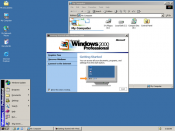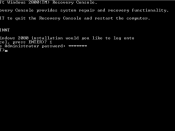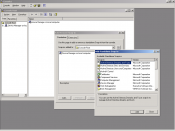Microsoft Windows has long dominated the business and home desktop market but there is a new contender on the block in the shape of LINUX that is beginning to compete with Microsoft Windows on many different fronts. What is this LINUX and how does it compare and contrast with the Microsoft Windows operating system?
Microsoft Windows has been around since 1983 and it's present incarnation, Microsoft Windows 2000, owes its roots to Windows 3.x, Windows 9x, and Windows NT. LINUX has been around since 1991, for all of its newness, is the latest incarnation of the UNIX operating system which first came into existence in 1969.
Let's start by comparing the minimum hardware requirements specified by each vendor for both LINUX, using the popular Red Hat Linux 9 platform, and the different flavors of Microsoft Windows 2000 as outlined in the following chart:
Hardware / Operating System LINUX, Red Hat Linux 9 Microsoft Windows 2000, Professional Microsoft Windows 2000, Server
Processor Intel Pentium Class, 133 MHz Intel Pentium Class, 133 MHz Intel Pentium Class, 133 MHz
Memory 064 MB Text, 128 MB Graphic 064 MB 256 MB
Hard Drive Space 1750 MB, 5000 MB 2000 MB 2000 MB
On paper, the differences look surprisingly trivial don't they? In actuality, in each case the recommended setting are significantly higher based on the purpose of the system and the applications in use with the biggest change being in memory use on the Microsoft Windows 2000 platform where the recommended memory settings are 256 MB on Microsoft Windows 2000 Professional to 512 MB on Microsoft Windows 2000 Server.
As for pricing, how does LINUX compare against Microsoft Windows 2000? This is a difficult question to answer due to the additional questions of are we talking home user, academic, or corporate licensing and...


